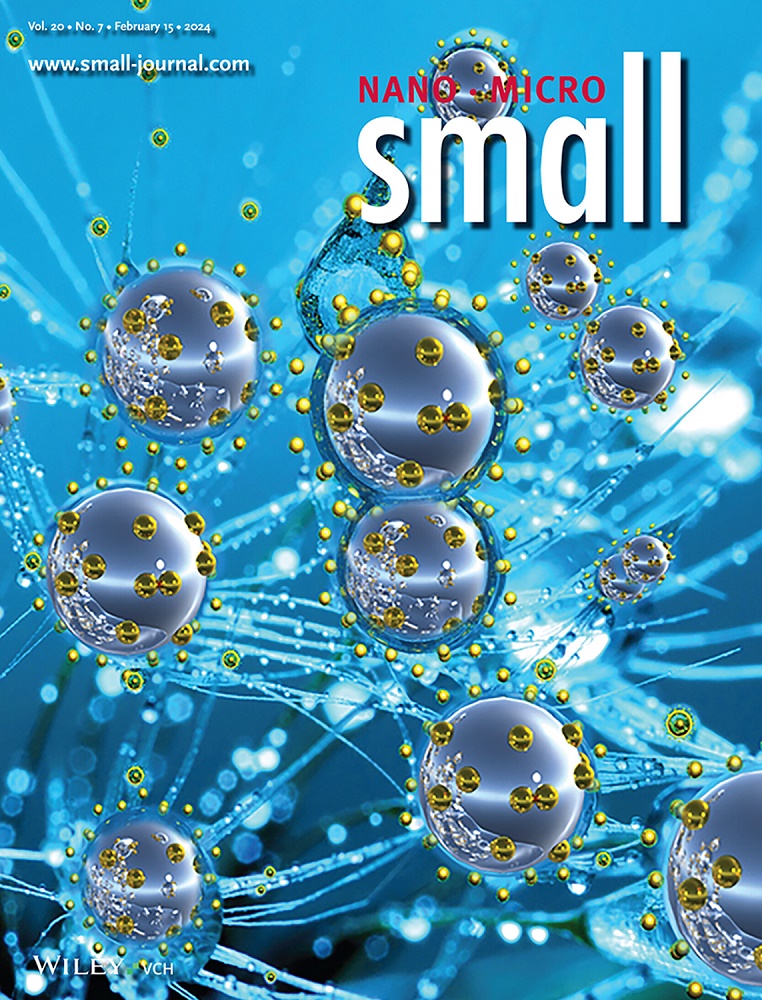抗耐药细菌感染铜基金属纳米抗生素的合理设计
IF 12.1
2区 材料科学
Q1 CHEMISTRY, MULTIDISCIPLINARY
引用次数: 0
摘要
抗生素耐药细菌感染的全球发病率迅速增加,对全世界的公共卫生构成严重威胁,要求立即开发新的抗微生物方法。本研究利用原位还原法制备了一种合理设计的多功能金属纳米抗生素(MNAB)体系。铜种的战略性结合大大增强了对临床分离菌株的抗菌活性,包括两种革兰氏阳性和四种革兰氏阴性细菌。值得注意的是,该系统对革兰氏阳性菌的最低抑制浓度(MIC)为≈20 ppm,对革兰氏阴性菌的最低抑制浓度(MIC)为≈60 ppm,其效果与传统抗生素相当。机制研究表明,MNABs通过对细胞膜的氧化损伤来发挥其抗菌作用,同时调节多个基因簇,证实了其广谱抗菌能力。这项研究为开发下一代抗生素替代品提供了战略蓝图,为对抗耐药细菌感染提供了有希望的解决方案。本文章由计算机程序翻译,如有差异,请以英文原文为准。
Rational Design of Copper‐Based Metallic Nano‐Antibiotic against Drug‐Resistant Bacteria Infection
The rapidly increasing global incidence of antibiotic‐resistant bacterial infections poses a serious threat to public health worldwide, demanding immediate development of novel antimicrobial approaches. In this study, a rationally designed multifunctional metallic nano‐antibiotic (MNAB) system using an in‐situ reduction method is developed. The strategic incorporation of cuprous species substantially enhanced antimicrobial activity against clinically isolated strains, including two Gram‐positive and four Gram‐negative bacterial species. Remarkably, the system exhibited minimum inhibitory concentrations (MIC) of ≈20 ppm for Gram‐positive bacteria and ≈60 ppm for Gram‐negative bacteria, demonstrating efficacy on par with conventional antibiotics. Mechanistic investigations revealed that MNABs exert their antimicrobial effects through potent oxidative damage to cellular membranes while simultaneously modulating multiple gene clusters, confirming their broad‐spectrum antimicrobial capabilities. This study provides a strategic blueprint for developing next‐generation antibiotic alternatives, offering a promising solution for combating drug‐resistant bacterial infections.
求助全文
通过发布文献求助,成功后即可免费获取论文全文。
去求助
来源期刊

Small
工程技术-材料科学:综合
CiteScore
17.70
自引率
3.80%
发文量
1830
审稿时长
2.1 months
期刊介绍:
Small serves as an exceptional platform for both experimental and theoretical studies in fundamental and applied interdisciplinary research at the nano- and microscale. The journal offers a compelling mix of peer-reviewed Research Articles, Reviews, Perspectives, and Comments.
With a remarkable 2022 Journal Impact Factor of 13.3 (Journal Citation Reports from Clarivate Analytics, 2023), Small remains among the top multidisciplinary journals, covering a wide range of topics at the interface of materials science, chemistry, physics, engineering, medicine, and biology.
Small's readership includes biochemists, biologists, biomedical scientists, chemists, engineers, information technologists, materials scientists, physicists, and theoreticians alike.
 求助内容:
求助内容: 应助结果提醒方式:
应助结果提醒方式:


